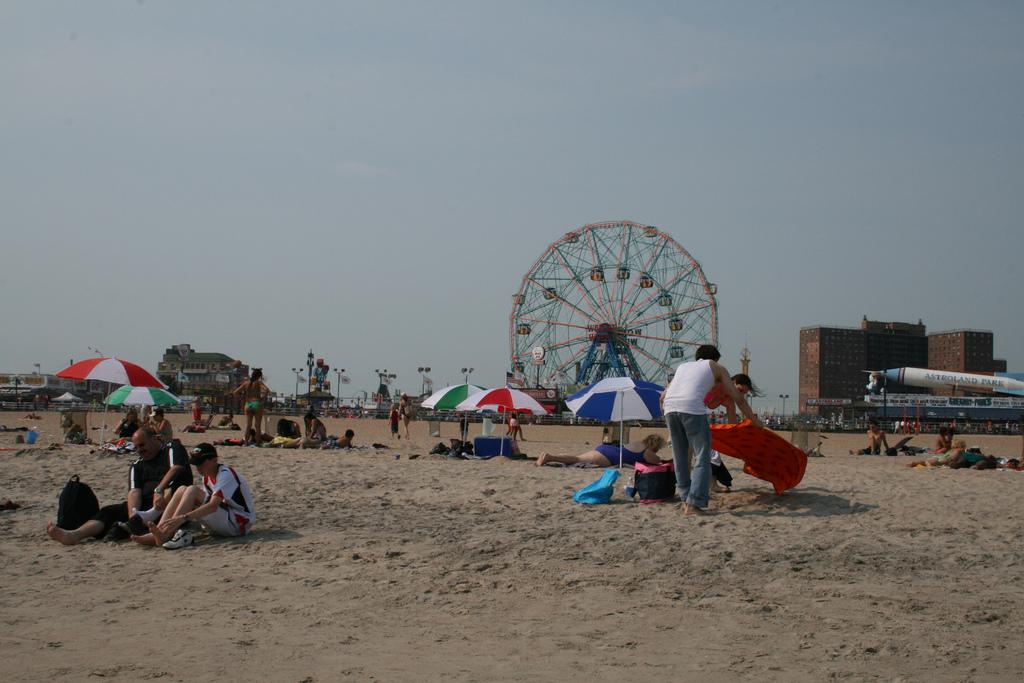The Clock is Ticking on Coney Island
May 26, 2011

Published: August 30, 2007
In this city, money doesn’t just talk, it shouts—even when throngs of people are desperately trying to shout over it. At Coney Island, the iconic seaside neighborhood on the southerly rim of Brooklyn, money in the form of lucrative real estate development has spoken, and the fate of the area’s historic character lies in the balance. The situation represents a losing battle for the Astroland amusement park, which is facing its last summer as one of New York City’s most beloved landmarks at the hands of real estate developer Thor Equities.
Astroland, which occupies just over three acres of Coney Island’s beachfront property, has famously been a bastion of gritty summertime fun since its incipience in 1962. It is home to the legendary Cyclone roller coaster, which, on its 80th anniversary this year, is still considered by many to be more terrifying than any modern monstrosity Six Flags has to offer. It shares the boardwalk with classic neighborhood staples like Nathan’s Famous restaurant (now home to the annual Fourth of July hot-dog eating contest) and the ever-entertaining “Shoot the Freak” booth, and the Wonder Wheel revolves daily over the masses on the pavement below. Yet it is unclear how much of Astroland and its surrounding boardwalk kitsch will remain come next summer. In November 2006, the park was purchased for $30 million by Thor Equities, whose CEO and head developer, Joseph Sitt, plans to turn the area into a landscape of pricey condominiums, high-rise hotels and a new amusement park that will look like something out of “Blade Runner.” While the Cyclone will remain in operation after Astroland has closed its doors, it will be one of the few spectacles to be spared by Sitt’s plan.
And while Sitt told the New York Post in April that he was considering keeping portions of the park open, don’t expect his $10 billion development plan to preserve much of the historical mystique that has made Coney Island a legend. The neighborhood began as a post-Civil War resort where patrons could stroll down the beach, bet on horses and play carnival games, but Coney’s seedy side showed itself early on—the area was rife with gambling and prostitution throughout the post-war decades. Developers and entrepreneurs, fueled by rapid industrialization and expansion at the turn of the 20th century, capitalized on Coney Island’s growing popularity and idyllic peninsular location and it continued to thrive as a seaside purlieu up through the former half of the century. Long-dismantled attractions like Luna Park and Steeplechase Park thrived on carnival-style entertainment. But as technology like air conditioning and the automobile developed, the area lost some of its original appeal and degenerated into a sleazy haven for street gangs. New York experienced an improvement of infrastructure brought on by Parks Commissioner Robert Moses in the ’50s, which would eventually help shape the “reactivation” of the resort with the opening of Astroland in 1962.
If you’ve never been there, go there now. The vaguely scummy yet picturesque beach, stretching around the Brooklyn shoreline and flanked by the colorful, weather-beaten boardwalk, is a sight to behold. Guarding the skyline is the austere red tower of the once-operational Parachute Jump ride, which saw its last passenger in 1968. If anything, Coney Island is a Brooklyn relic that seems to defy chronology—whereas the rest of New York City has churned upward and onward, the “playground of the world” is a throwback to a time decades ago when 10 cents covered the train ride south on the Sea Beach Line and a hot dog at Nathan’s. Astroland is slated to close for good on September 8, which means you’ve got to get there fast—don’t miss your chance to witness this crucial fragment in the story of New York City before it’s transformed by Manhattan money.









